-
 Bitcoin
Bitcoin $77,174.4332
-6.66% -
 Ethereum
Ethereum $1,513.9694
-15.12% -
 Tether USDt
Tether USDt $0.9994
0.00% -
 XRP
XRP $1.7976
-13.35% -
 BNB
BNB $546.9143
-6.92% -
 USDC
USDC $1.0000
0.01% -
 Solana
Solana $102.1830
-13.15% -
 TRON
TRON $0.2263
-5.32% -
 Dogecoin
Dogecoin $0.1407
-13.87% -
 Cardano
Cardano $0.5506
-13.28% -
 UNUS SED LEO
UNUS SED LEO $8.8923
-1.36% -
 Toncoin
Toncoin $3.0651
-6.63% -
 Chainlink
Chainlink $10.9654
-12.57% -
 Stellar
Stellar $0.2233
-10.13% -
 Avalanche
Avalanche $15.7971
-7.68% -
 Shiba Inu
Shiba Inu $0.0...01102
-8.27% -
 Sui
Sui $1.8598
-12.98% -
 MANTRA
MANTRA $6.1562
-1.39% -
 Hedera
Hedera $0.1389
-10.82% -
 Polkadot
Polkadot $3.4511
-12.05% -
 Dai
Dai $1.0001
0.02% -
 Bitcoin Cash
Bitcoin Cash $265.0446
-9.69% -
 Litecoin
Litecoin $68.1930
-15.63% -
 Ethena USDe
Ethena USDe $0.9987
-0.03% -
 Bitget Token
Bitget Token $3.9224
-11.37% -
 Pi
Pi $0.5642
-11.92% -
 Monero
Monero $195.3244
-8.26% -
 Hyperliquid
Hyperliquid $10.5437
-7.47% -
 Uniswap
Uniswap $4.9997
-12.42% -
 OKB
OKB $49.8749
-7.33%
What does blockchain mining mean and how is cross-chain mining achieved?
Blockchain mining validates transactions and adds them to the blockchain, while cross-chain mining extends this across multiple networks for enhanced interoperability.
Apr 05, 2025 at 09:15 am
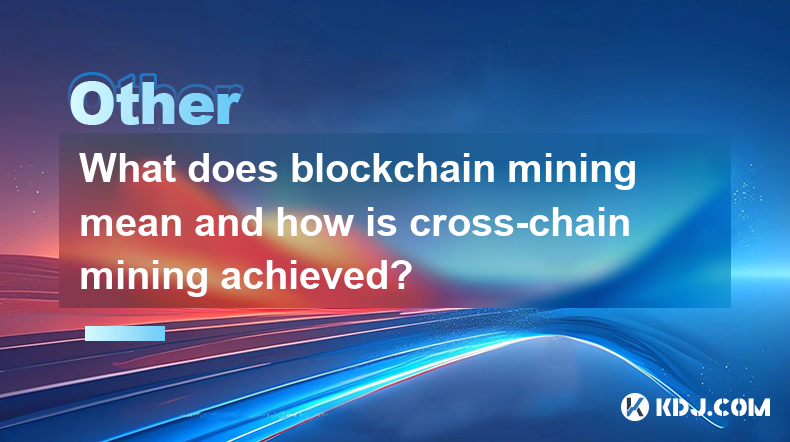
Blockchain mining is a crucial process in the world of cryptocurrencies, serving as the backbone for the operation and security of blockchain networks. At its core, mining involves solving complex mathematical problems to validate and add new transactions to the blockchain. Miners use powerful computers to compete in solving these problems, and the first to solve the puzzle gets to add a new block to the chain and is rewarded with newly minted cryptocurrency, typically Bitcoin. This process not only creates new coins but also ensures the integrity and security of the network by verifying transactions and preventing double-spending.
The concept of mining originated with Bitcoin, created by Satoshi Nakamoto in 2009. Bitcoin mining uses a consensus algorithm called Proof of Work (PoW), where miners compete to solve cryptographic puzzles. The difficulty of these puzzles adjusts automatically to maintain a consistent block time, typically around 10 minutes for Bitcoin. This system ensures that the network remains decentralized and secure, as it would be economically unfeasible for a single entity to control the majority of the mining power.
The Process of Blockchain Mining
Blockchain mining involves several key steps. First, miners collect a set of unconfirmed transactions from the network's memory pool. These transactions are grouped into a block. Next, miners apply the PoW algorithm to find a hash that meets the network's difficulty target. This involves repeatedly hashing the block's header with different nonces until a valid hash is found. Once a valid hash is discovered, the miner broadcasts the new block to the network. Other nodes then verify the block and, if valid, add it to their copy of the blockchain. The miner is then rewarded with the block reward and any transaction fees included in the block.
The Role of Miners in the Blockchain Ecosystem
Miners play a vital role in the blockchain ecosystem. They not only create new coins but also maintain the network's security and integrity. By validating transactions, miners prevent fraudulent activities such as double-spending. Additionally, miners contribute to the decentralized nature of the blockchain by distributing the power to validate transactions across a wide network of participants. This decentralization is fundamental to the ethos of cryptocurrencies, as it prevents any single entity from controlling the network.
Challenges and Innovations in Blockchain Mining
Blockchain mining, while essential, faces several challenges. One major issue is the high energy consumption associated with PoW mining. The computational power required to solve the cryptographic puzzles consumes significant amounts of electricity, leading to concerns about the environmental impact of mining operations. To address this, alternative consensus mechanisms like Proof of Stake (PoS) have been developed. PoS relies on validators who are chosen to create new blocks based on the number of coins they hold and are willing to "stake" as collateral, rather than on computational power.
Another challenge is the centralization of mining power. Over time, mining has become dominated by large mining pools and specialized hardware, leading to concerns about the decentralization of the network. Innovations such as decentralized mining pools and the development of more energy-efficient mining hardware aim to address these issues. Additionally, the rise of layer-two solutions and sidechains offers new ways to enhance the scalability and efficiency of blockchain networks without compromising their security.
Introduction to Cross-Chain Mining
Cross-chain mining is an advanced concept that extends the principles of traditional blockchain mining across multiple blockchain networks. It aims to facilitate interoperability between different blockchains, allowing assets and data to be transferred seamlessly. Cross-chain mining can enhance the efficiency and utility of blockchain networks by enabling miners to validate transactions across multiple chains simultaneously. This not only increases the potential rewards for miners but also promotes greater integration and cooperation within the broader cryptocurrency ecosystem.
How Cross-Chain Mining Works
Cross-chain mining involves several key components and processes. First, it requires the establishment of protocols that allow different blockchains to communicate and interact. These protocols can include atomic swaps, which enable the exchange of assets between chains without the need for intermediaries, and bridge technologies that facilitate the transfer of data and assets. Miners participating in cross-chain mining must have the capability to validate transactions on multiple chains, often requiring specialized software and hardware.
- Atomic Swaps: These enable the direct exchange of assets between different blockchains without the need for a centralized intermediary. Miners can facilitate these swaps by validating the transactions on both chains involved.
- Bridge Technologies: These act as connectors between different blockchains, allowing data and assets to be transferred. Miners can validate these transactions, ensuring the integrity of the cross-chain operations.
- Interoperability Protocols: These are sets of rules and standards that enable different blockchains to communicate and interact. Miners need to adhere to these protocols to ensure seamless cross-chain operations.
Benefits of Cross-Chain Mining
Cross-chain mining offers several benefits to the cryptocurrency ecosystem. First, it enhances the efficiency of mining operations by allowing miners to validate transactions across multiple chains, potentially increasing their rewards. Second, it promotes greater interoperability between different blockchain networks, facilitating the seamless transfer of assets and data. This can lead to increased liquidity and utility for cryptocurrencies, as users can more easily move their assets between different ecosystems. Finally, cross-chain mining can contribute to the overall security and decentralization of the blockchain ecosystem by distributing mining power across multiple networks.
Challenges and Considerations in Cross-Chain Mining
Despite its potential benefits, cross-chain mining faces several challenges. One major issue is the complexity of implementing and maintaining cross-chain protocols. Ensuring the security and integrity of transactions across multiple chains requires sophisticated technology and robust security measures. Additionally, the regulatory environment surrounding cross-chain operations can be uncertain, as different jurisdictions may have varying rules and standards for cryptocurrencies and blockchain technology.
Another consideration is the potential for increased centralization. If cross-chain mining becomes dominated by a few large players, it could undermine the decentralized nature of blockchain networks. To mitigate this risk, it is essential to develop decentralized cross-chain protocols and encourage a diverse range of participants in cross-chain mining operations. Finally, the technical requirements for cross-chain mining, such as specialized software and hardware, can create barriers to entry for smaller miners, potentially limiting the overall decentralization of the network.
Future Prospects of Cross-Chain Mining
The future of cross-chain mining looks promising, with ongoing developments and innovations aimed at enhancing its feasibility and effectiveness. As blockchain technology continues to evolve, we can expect to see more advanced cross-chain protocols and interoperability solutions. These advancements could lead to a more integrated and efficient cryptocurrency ecosystem, where assets and data can flow freely between different networks. Additionally, the growing interest in decentralized finance (DeFi) and non-fungible tokens (NFTs) is likely to drive further demand for cross-chain solutions, as these applications often require seamless interoperability between different blockchain networks.
Common Questions Related to Blockchain Mining and Cross-Chain Mining
Q: What is the primary purpose of blockchain mining?
A: The primary purpose of blockchain mining is to validate and add new transactions to the blockchain, ensuring the network's security and integrity. Miners solve complex mathematical problems to achieve this, and in return, they are rewarded with newly minted cryptocurrency and transaction fees.
Q: How does Proof of Work (PoW) differ from Proof of Stake (PoS)?
A: PoW requires miners to solve cryptographic puzzles using computational power, whereas PoS selects validators based on the number of coins they hold and are willing to stake as collateral. PoS is generally considered more energy-efficient than PoW.
Q: What are the main challenges associated with traditional blockchain mining?
A: The main challenges include high energy consumption, the potential for centralization of mining power, and the need for specialized and expensive hardware. These issues have led to the development of alternative consensus mechanisms and more energy-efficient mining solutions.
Q: What is cross-chain mining, and how does it work?
A: Cross-chain mining involves validating transactions across multiple blockchain networks, facilitating interoperability and the seamless transfer of assets and data. It requires the use of protocols such as atomic swaps, bridge technologies, and interoperability standards to enable communication and interaction between different chains.
Q: What are the benefits of cross-chain mining?
A: The benefits include increased efficiency for miners, enhanced interoperability between blockchain networks, increased liquidity and utility for cryptocurrencies, and potential contributions to the overall security and decentralization of the blockchain ecosystem.
Q: What are the main challenges and considerations in implementing cross-chain mining?
A: The main challenges include the complexity of implementing and maintaining cross-chain protocols, ensuring security and integrity across multiple chains, navigating uncertain regulatory environments, and preventing increased centralization. Additionally, the technical requirements can create barriers to entry for smaller miners.
Q: How might cross-chain mining evolve in the future?
A: The future of cross-chain mining is likely to see more advanced protocols and interoperability solutions, driven by ongoing developments in blockchain technology. The growing interest in DeFi and NFTs is expected to further increase demand for cross-chain solutions, leading to a more integrated and efficient cryptocurrency ecosystem.
Disclaimer:info@kdj.com
The information provided is not trading advice. kdj.com does not assume any responsibility for any investments made based on the information provided in this article. Cryptocurrencies are highly volatile and it is highly recommended that you invest with caution after thorough research!
If you believe that the content used on this website infringes your copyright, please contact us immediately (info@kdj.com) and we will delete it promptly.
- Ethereum and Solana Prices Collapsed Monday Morning as President Trump's Sweeping New Tariffs Sparked a Global Market Selloff
- 2025-04-07 20:35:12
- GameStop Corp. (NYSE: GME) Announces Bitcoin Purchase Plans, Sparking Stock Rally
- 2025-04-07 20:35:12
- New Plan to Stabilize Pi Coin Price Gains Attention
- 2025-04-07 20:30:11
- Who hasn't dreamed of finding the next 1000x crypto? Imagine turning a small investment into a huge fortune overnight.
- 2025-04-07 20:30:11
- U.S. President Donald Trump’s sweeping reciprocal tariffs have triggered fresh panic across global financial markets.
- 2025-04-07 20:25:12
- Solana (SOL) Plunges Below $100, Memecoin Mania Cools
- 2025-04-07 20:25:12
Related knowledge
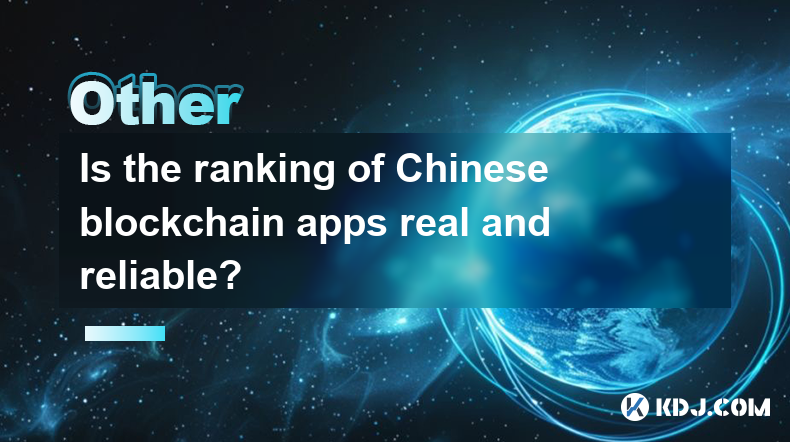
Is the ranking of Chinese blockchain apps real and reliable?
Apr 04,2025 at 09:01pm
The ranking of Chinese blockchain apps has become a topic of interest for many in the cryptocurrency community, as it provides insights into the popularity and adoption of blockchain technology within China. However, the reliability and authenticity of these rankings are often questioned. This article aims to delve into the factors that influence these ...
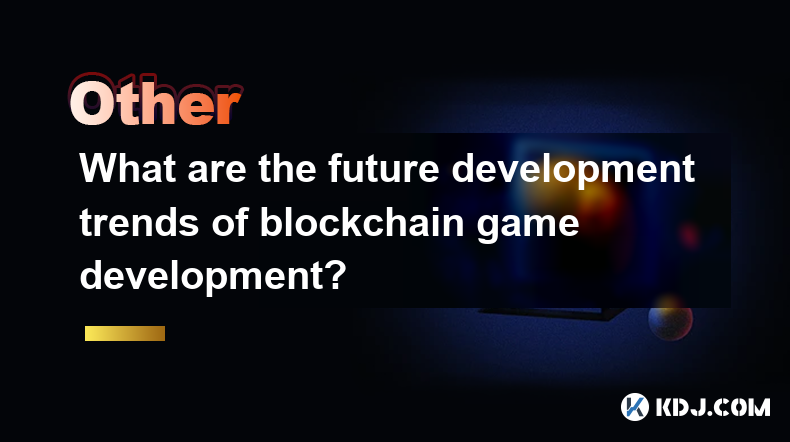
What are the future development trends of blockchain game development?
Apr 03,2025 at 05:00am
Blockchain technology has revolutionized various industries, and gaming is no exception. As we look to the future, several trends are set to shape the development of blockchain games. These trends not only promise to enhance the gaming experience but also to integrate blockchain technology more seamlessly into the gaming ecosystem. Let's explore these t...
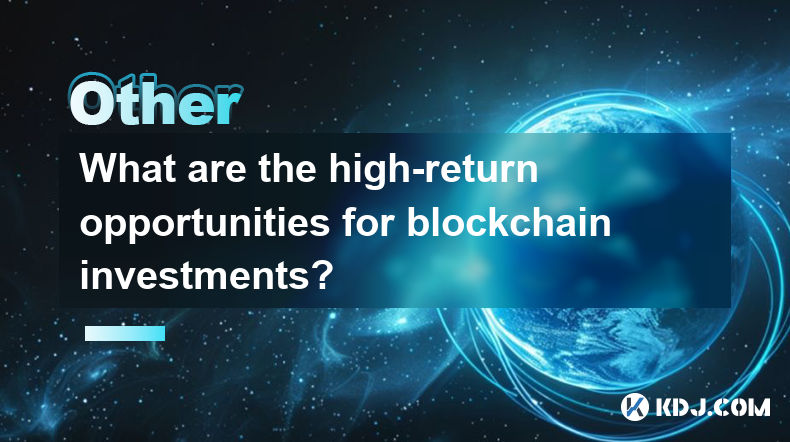
What are the high-return opportunities for blockchain investments?
Apr 05,2025 at 02:35pm
Blockchain technology has revolutionized the financial world, offering numerous high-return investment opportunities. These opportunities span various sectors within the cryptocurrency ecosystem, including cryptocurrencies, decentralized finance (DeFi), non-fungible tokens (NFTs), and blockchain startups. Each of these areas presents unique risks and re...
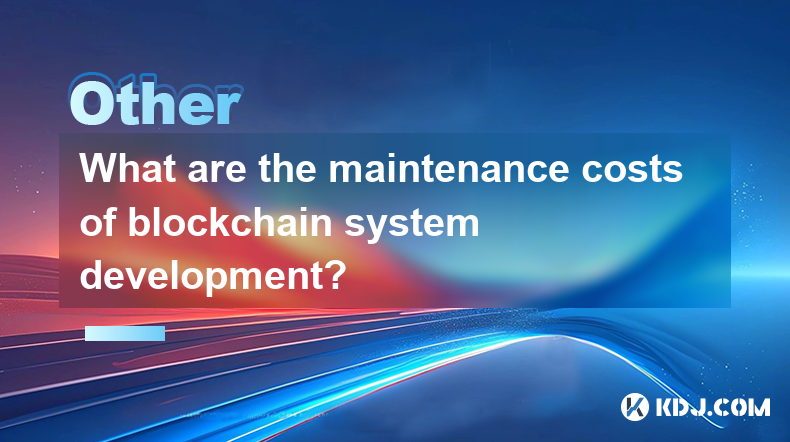
What are the maintenance costs of blockchain system development?
Apr 03,2025 at 06:07pm
The maintenance costs of blockchain system development are multifaceted and depend on various factors. These costs can include technical maintenance, security updates, infrastructure expenses, and personnel costs. Understanding these elements is crucial for anyone planning to develop or maintain a blockchain system. Technical MaintenanceTechnical mainte...
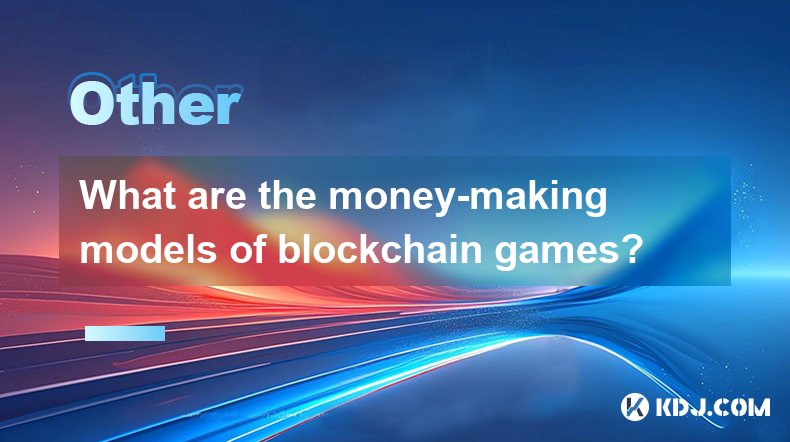
What are the money-making models of blockchain games?
Apr 04,2025 at 02:00pm
Blockchain games have emerged as a revolutionary way for players to earn real money while enjoying their favorite pastime. These games leverage the power of blockchain technology to create unique money-making models that benefit both the players and the developers. In this article, we will explore the various money-making models of blockchain games and ...
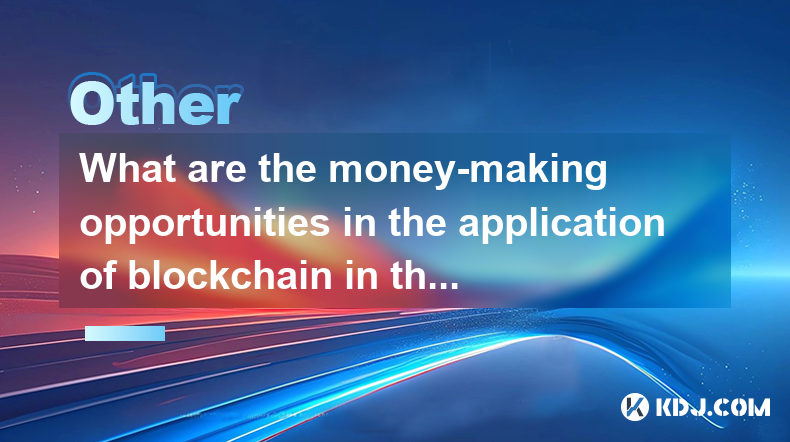
What are the money-making opportunities in the application of blockchain in the field of Internet of Things?
Apr 05,2025 at 10:35pm
The integration of blockchain technology with the Internet of Things (IoT) presents numerous money-making opportunities. Blockchain, with its decentralized and secure nature, can revolutionize how IoT devices interact, manage data, and conduct transactions. This article will explore various avenues where entrepreneurs, developers, and investors can capi...

Is the ranking of Chinese blockchain apps real and reliable?
Apr 04,2025 at 09:01pm
The ranking of Chinese blockchain apps has become a topic of interest for many in the cryptocurrency community, as it provides insights into the popularity and adoption of blockchain technology within China. However, the reliability and authenticity of these rankings are often questioned. This article aims to delve into the factors that influence these ...

What are the future development trends of blockchain game development?
Apr 03,2025 at 05:00am
Blockchain technology has revolutionized various industries, and gaming is no exception. As we look to the future, several trends are set to shape the development of blockchain games. These trends not only promise to enhance the gaming experience but also to integrate blockchain technology more seamlessly into the gaming ecosystem. Let's explore these t...

What are the high-return opportunities for blockchain investments?
Apr 05,2025 at 02:35pm
Blockchain technology has revolutionized the financial world, offering numerous high-return investment opportunities. These opportunities span various sectors within the cryptocurrency ecosystem, including cryptocurrencies, decentralized finance (DeFi), non-fungible tokens (NFTs), and blockchain startups. Each of these areas presents unique risks and re...

What are the maintenance costs of blockchain system development?
Apr 03,2025 at 06:07pm
The maintenance costs of blockchain system development are multifaceted and depend on various factors. These costs can include technical maintenance, security updates, infrastructure expenses, and personnel costs. Understanding these elements is crucial for anyone planning to develop or maintain a blockchain system. Technical MaintenanceTechnical mainte...

What are the money-making models of blockchain games?
Apr 04,2025 at 02:00pm
Blockchain games have emerged as a revolutionary way for players to earn real money while enjoying their favorite pastime. These games leverage the power of blockchain technology to create unique money-making models that benefit both the players and the developers. In this article, we will explore the various money-making models of blockchain games and ...

What are the money-making opportunities in the application of blockchain in the field of Internet of Things?
Apr 05,2025 at 10:35pm
The integration of blockchain technology with the Internet of Things (IoT) presents numerous money-making opportunities. Blockchain, with its decentralized and secure nature, can revolutionize how IoT devices interact, manage data, and conduct transactions. This article will explore various avenues where entrepreneurs, developers, and investors can capi...
See all articles





















































































